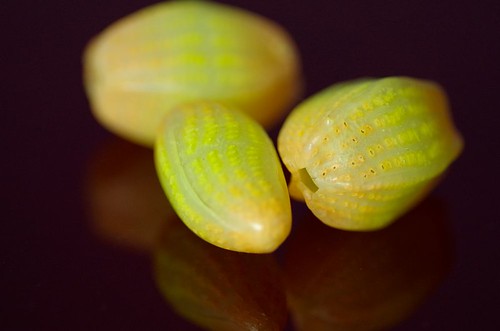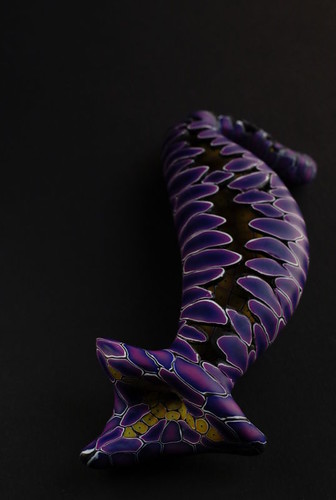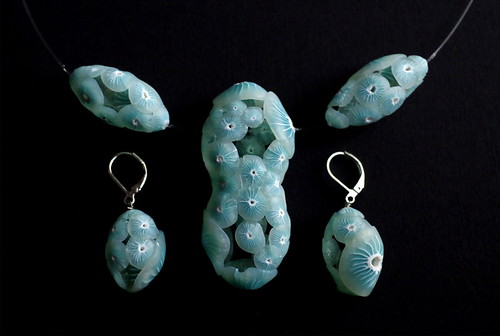It is probably not the best material but can come in handy, and allows to make very nice custom shapes.

Disclaimer: I have had no problems baking playdoh at the temperatures at which polymer clay is normally baked. However, I do not know how it behaves at higher temperatures, or when baked for a very long time (more than an hour or two). Use caution like you would for any inclusion material.
The principle is extremely simple: build a shape out of playdoh, add a veneer, bake and carefully soak out to eliminate the water-soluble dough.
This is how I buildt the focus of the Invasive I necklace, for instance,

added support during work to have an almost closed internal space here:

or shaped the blue plankton beads set

Some remarks:
-This dough contracts during drying and baking, and if the polymer is not strong enough (thickness, assembly of parts), it will crack, like the blue plankton bead set did. You can limit this by working with a thicker veneer, and being very careful at the sutures between sheets. It is also possible to pre-bake using a heat gun that will stabilize the polymer clay without heating the internal material too much, and then to bake. Its is less of a problem for small beads than big ones.
- It is also possible to dry the internal shape before use. It cracks and gets much smaller, so you need to work in several layers and dry in between. However, it expands when soaked in the water, and the dryer at the soaking, the bigger the volume change. This is ok if the shape is very strong (but most shapes stand expansion less well than contraction) and the opening for the water-soluble clay rather large, so you can evacuate material fast.
- Speaking of which. When put in water, playdoh gets mushy, and can be evacuated even from small recesses. However, it goes faster if you help a bit with a toothpick or another tool, to allow deeper access of the water, and making cycles of soaking-evacuating. This technique allows to make hollow beads with only very small holes to evacuate the dough through, but the smaller the holes, the longer the clean-up time.
So there are clear limitations, but it remains an interesting material.
Linked posts (some to come, but available already on Flickr):
Playdoh cane

Faux wood playdoh cane

Shell beads tutorial

I believe in sharing. I have learned most of what I know about polymer clay, and many other subjects, from the web, so giving back seems the right thing to do.
You are very welcome to use these techniques, and even sell the result. However, I would much appreciate a mention and a link if you use these techniques.
And I would love to see anything you have done with this...
Aucun commentaire:
Enregistrer un commentaire